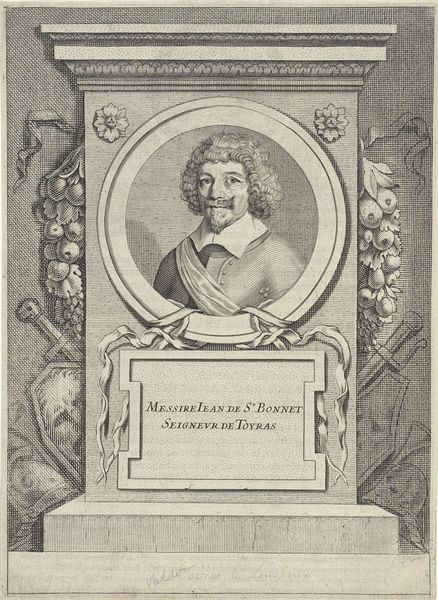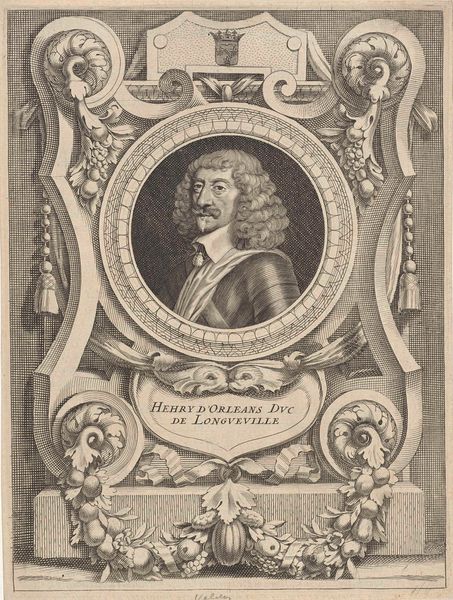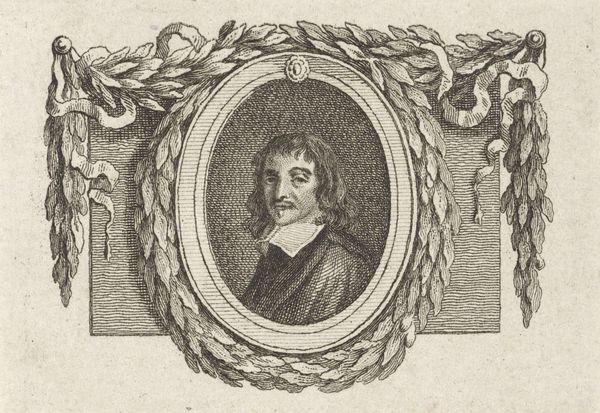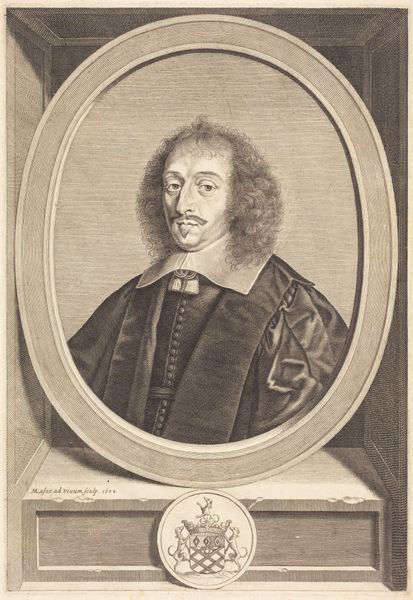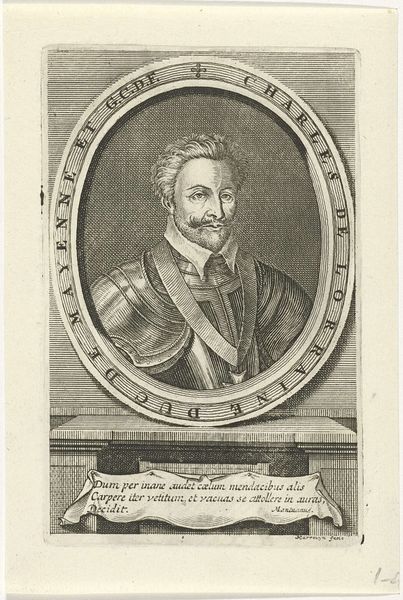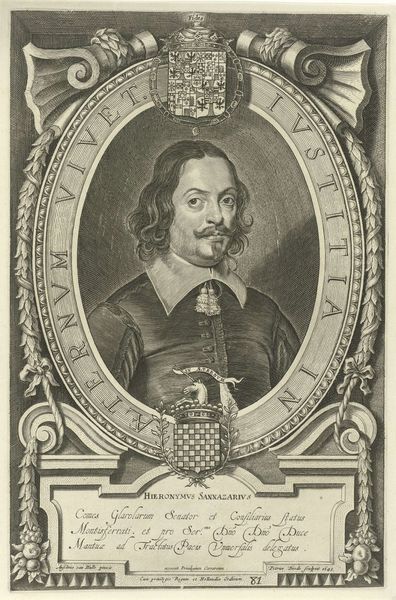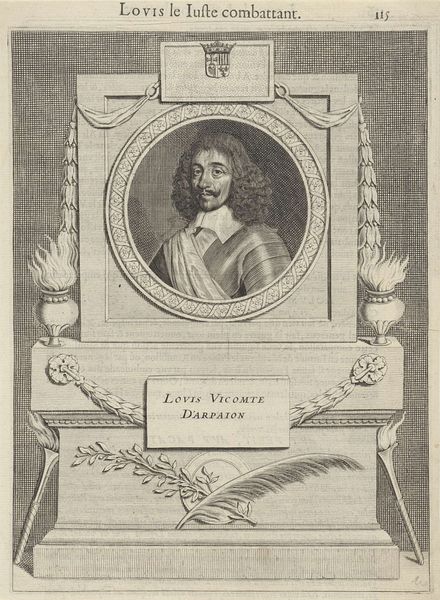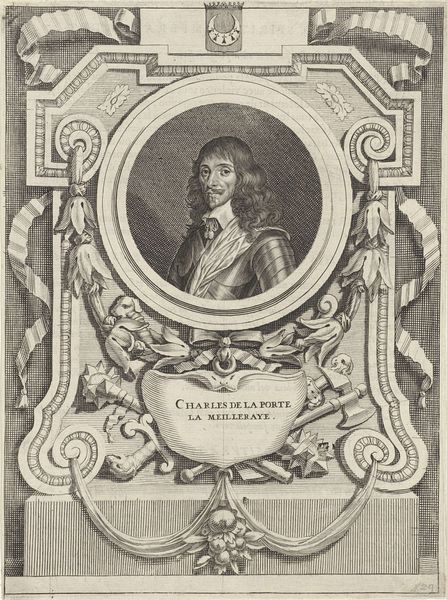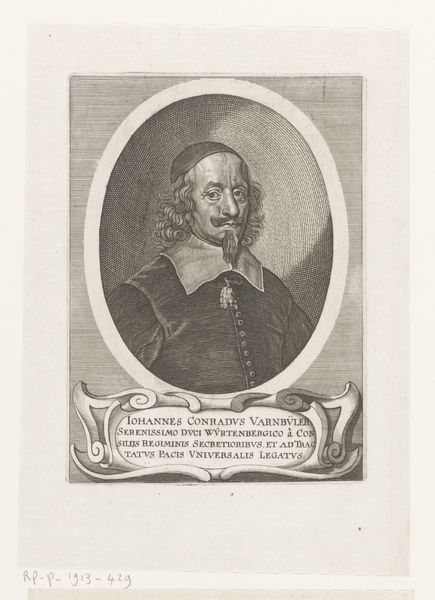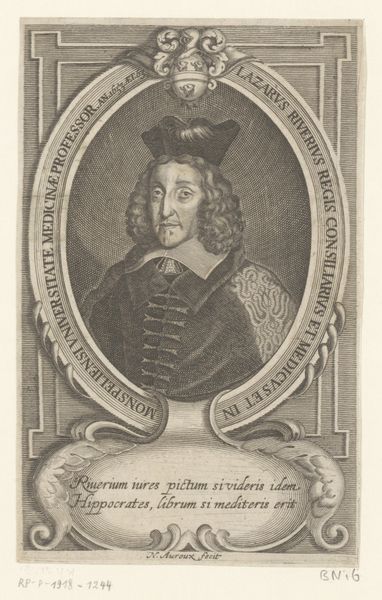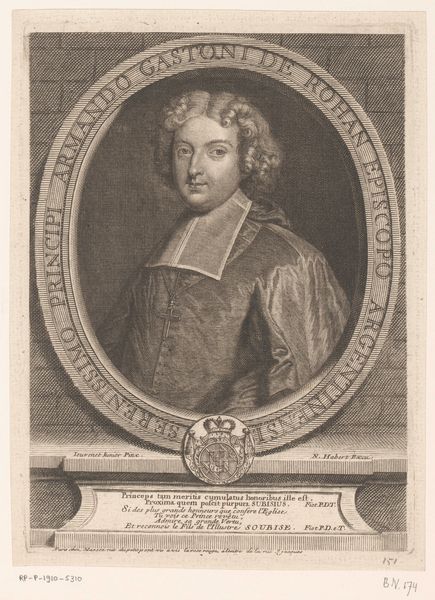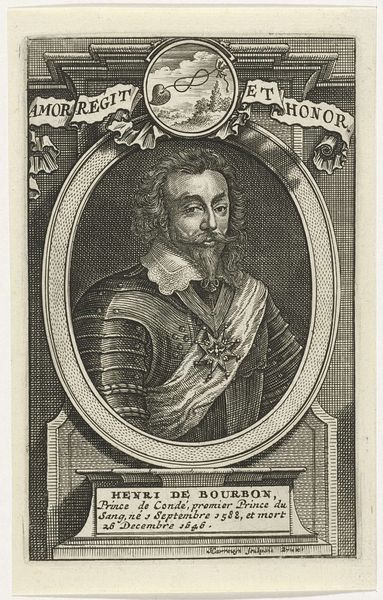
engraving
#
portrait
#
baroque
#
history-painting
#
engraving
Dimensions: height 263 mm, width 200 mm
Copyright: Rijks Museum: Open Domain
This is Johannes Valdor the Younger's portrait of Henry duc de Montmorency, made sometime in the mid-17th century. It's an engraving, which means the design was incised into a metal plate, likely copper, then printed. Look closely, and you'll see a whole world of labor embedded in this small image. The engraver had to be skilled not only in drawing, to capture Montmorency’s likeness, but also in the precise, physically demanding work of cutting lines into metal. Each tiny stroke required focused effort. The quality of the lines determine the visual effect – light, shadow, texture. Engraving was a key technology for disseminating images widely during this period. It allowed for relatively inexpensive reproduction, feeding a growing market for portraits and other imagery. So, even though this work celebrates an aristocrat, it also reflects the rise of a proto-capitalist system of production and consumption. The very material and making of this image reminds us that all art is rooted in human effort, and situated within a broader social and economic context.
Comments
No comments
Be the first to comment and join the conversation on the ultimate creative platform.
